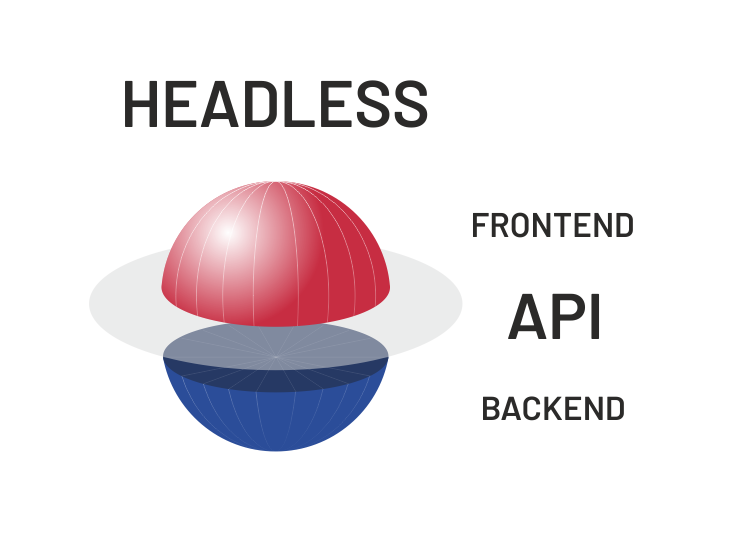Top Headless Commerce Platforms to Consider

Committing to a headless migration is a significant leap, one that, despite the upfront investment, unlocks a world of digital flexibility and long-term advantages for your organization. Yet with countless ecommerce platforms available, it’s crucial to understand that not all are technically equipped to support a true headless architecture. Choosing the right solution, whether it’s SAP Commerce Cloud or Adobe Commerce, can make a big difference.
In this article, we’ll overview five top headless commerce platforms suitable for enterprises’ needs that offer sufficient capabilities to help you fulfill your digital commerce goals.
Quick Tips for Busy People
To guide you through the choice of the best headless commerce platforms, here are some quick tips to know:
- Trends: 73% of the companies have now moved to a headless architecture, which is a dramatic shift in the landscape of ecommerce.
- Key features to consider when choosing a headless platform: scalability, advanced integration capabilities, user-friendly interfaces, robust security measures, and active community support.
- Top headless commerce platforms: SAP Commerce Cloud, Salesforce Commerce Cloud, BigCommerce, Adobe Commerce, and Commercetools.
- Why SAP Commerce Cloud: working with this platform at Expert Soft, we know how to blend its advanced features with a headless approach for maximized business efficiency.
Details next.
Headless Commerce: Quick Overview
Did you know that according to the 2024 market studies, headless commerce is surging with 73% of businesses already using it? It’s up 14% from 2021 and nearly 40% since 2019. Of the remaining non-users, 98% are considering headless solutions in the next year. It’s pretty apparent that this approach tends to be a smart one towards operational management.
So, why is there such a dramatic shift to the headless approach in ecommerce? Headless architecture is designed to decouple the front-end presentation layer from the back-end functionality, establishing communication via REST API. Headless allows companies to create agile and customized user experiences and enables seamless interaction across multiple touchpoints, such as websites or mobile applications, without being restricted by traditional ecommerce digital solutions.

The headless approach integrated with a headless content management system turns out to be even more powerful. Within headless CMS meaning the principle is the same: decoupled back-end and front-end communicating via REST API. In this way, ecommerce businesses can handle their digital content within their headless setup, increasing personalized experiences in a multi-platform environment. With headless CMS, companies can manage their content with ease and realize all the advantages of headless commerce architecture.
Key Criteria for Headless Commerce Platforms
Having noted several advantages of headless commerce, let’s now consider the main criteria for choosing the best option from headless ecommerce platforms. Understanding such factors will help you make informed decisions in line with your operational needs and long-term objectives.
-
API-first approach
This philosophy brings flexibility when the developer can extend frontend applications and develop additional functionality using well-documented REST APIs. This solution makes sure your ecommerce system is scalable and extendable for further enhancements and custom features.
-
Integration capabilities
Best headless ecommerce platforms should be able to deliver smooth internal and external integrations, creating a connected digital ecosystem. For instance, integration with payment gateways will ease checkout operations and reduce transaction errors.
-
Security
When choosing a headless ecommerce platform, pay attention to security features, such as encryption and two-factor authentication to safeguard customers' data. These measures build trust with customers and also assure compliance with regulations, all while allowing your business to operate securely within a competitive digital environment.
-
User interface usability
A user-friendly interface is what will ensure your team efficiently manages the headless platform. For example, at Expert Soft, we had a project in which we created a new user interface for the back-office, as the previous one was cumbersome for the employees. Our team also united several operations in one flow, so the operations that previously required numerous clicks were reduced to just one to three, which increased employee performance and satisfaction.
-
Community
Naturally, the bigger the circle of users, the more community support and troubleshooting resources there will be. Best headless ecommerce platforms feature forums, tutorials, and active documentation to enable your team to fix issues faster.
-
Costs
Costs can vary a lot, as high-load web businesses would need more advanced and expensive platforms to handle increased demand. Whereas the initial investment may be high, it does provide better efficiency and scalability and may even save money later by reducing downtime and meeting your growing needs.
-
Business plans
The platform should be able to scale and adapt for future growth and changes. This level of adaptability saves time and resources and ultimately positions your business for success in a long-term digital market.
Best Headless Commerce Platforms
Now that we’ve talked about the criteria for choosing a headless commerce platform, we’ll look into some of the platforms that can be considered the top choices. Each of these demonstrates the headless commerce benefits and shines in meeting the key tech requirements for headless solutions.
SAP Commerce Cloud
One of the best candidates for leading headless ecommerce platforms is SAP Commerce Cloud (former SAP Hybris) — an industry-leading headless commerce platform targeted at enterprises. On top of a SaaS model built on the public cloud, it offers tech capabilities that meet the demands of B2B and B2C businesses. Delivering SAP Commerce development services, we at Expert Soft value this technology for its robust features, which empower us to create scalable headless ecommerce platforms that drive seamless customer experiences.
While SAP Commerce initially featured an Accelerator UI for rapid front-end development, which wasn’t truly headless, the platform has now embraced full headless capabilities. You can either build a front-end with their preferred technology or use Spartacus, SAP’s tailored storefront. Spartacus simplifies creating SPAs and PWAs, seamlessly integrating real-time data for personalized and consistent brand experiences.
SAP Commerce Cloud continuously evolves with regular updates and extensive technical documentation, ensuring it meets crucial standards like scalability, seamless integrations, and robust security. Its intuitive interface, combined with strong community support, makes it an appealing choice for businesses looking for a reliable and future-proof ecommerce solution, flexible for custom enhancements.
Key features
SAP Commerce Cloud provides a wide-ranging suite of functionalities, from extensive product information management (PIM) and customizable catalog management to seamless integrations with SAP’s ERP and advanced personalization capabilities. With composable commerce, it allows companies to seamlessly engage customers across various touchpoints through the web, mobile, and in-store.
- Pros: Strong integration with SAP solutions (including ERP, Marketing Cloud, Sales Cloud, etc.) and third-party applications; robust community support; wide variety of extensions.
- Cons: Relatively expensive, as SAP Commerce Cloud is highly investment-intensive; it is pretty complex and may require a dedicated development resource to fully benefit from all platform’s capabilities.
- User examples: Samsung, Swarovski.
- User Base: 4000+ ecommerce large organizations.
Companies partnering with Expert Soft have also benefited from SAP Commerce Cloud. Leveraging years of hands-on experience, our team has guided clients through the transition to headless architecture, optimizing their platforms for seamless integration, resilient performance, and flexible scaling.
Salesforce Commerce Cloud
Salesforce Commerce Cloud is known for its versatile, scalable solutions, making it one of the best headless ecommerce platforms for businesses aiming for dynamic growth in both B2C and B2B markets. With flexible storefront options, including templates, fully headless setups, and hybrid models, it supports quick deployment of localized, feature-rich sites tailored by geography and language. Its automated setup flows simplify customization, while app-like web features enhance user experiences.
Key features
Salesforce Commerce Cloud unifies commerce, marketing, CRM, PIM, CMS, and third-party data through customer profiles, enabling personalized promotions and cart growth optimization. It automates essential processes and tasks, such as back-in-stock alerts, and equips associates with mobile-first tools, detailed inventory management, and shopper data access.
- Pros: Integration with Salesforce CRM with innovative customer experiences driven by built-in AI for personalized interactions. An active support community and comprehensive resources aid seamless integration and growth.
- Cons: Requires specialized skills for custom adaptation, has a less intuitive interface, and may present SEO challenges, such as bloated code.
- User examples: L’Oreal Group and Humana.
- User base: Over 10K businesses globally.
Adobe Commerce (formerly Magento)
Adobe Commerce (Magento) is designed as a sound, flexible platform packed with comprehensive functionality, suitable for medium companies and large enterprises. It offers lots of features and integrations, e.g. with ERP, CMS, CRM, that can be customized to meet business needs. Furthermore, it adds value to the platform through community contributions.
Key features
Some key features of Adobe Commerce (formerly Magento) include highly customizable options and advanced product management, supporting a headless approach for greater flexibility. Integrated customer segmentation and robust marketing tools, such as personalized promotions and email campaigns, align with digital strategies. The platform also facilitates multi-store management, enabling streamlined tech processes to run multiple brands or sites from a single instance.
- Pros: It has great community support, and the marketplace is open with a lot of available plugins and extensions for further functionalities.
- Cons: The platform is complex to implement and maintain, thus entailing dedicated tech resources.
- User examples: Coca-Cola and T-Mobile.
- User base: About 240,000 users worldwide, which makes this network one of the best platforms for headless commerce.
BigCommerce
BigCommerce is a versatile platform that serves both B2B and B2C businesses, offering comprehensive functionalities to streamline digital ecommerce processes. With its scalability and strong security measures, BigCommerce supports business growth and aligns with strategic goals, enabling organizations to expand their operations while maintaining a seamless customer shopping experience.
Key features
BigCommerce has an exhaustive list of functionalities: from high-functioning product management to the ability to customize online storefront, including integrated SEO tools. It supports both B2B and B2C operations, from bulk pricing down to customer segmentation and flexible shipping options, and enables seamless integrations with ERP, CMS, CRM, and other systems.
- Pros: It’s highly scalable and has good out-of-the-box functionality, which reduces reliance on third-party apps. BigCommerce also boasts decent security features and provides 24/7 customer support for smooth business operations.
- Cons: Customization might be limited for some users when working with a not-completely open-source platform. Additionally, while there are no transaction fees, pricing plans can increase as businesses grow.
- User examples: Burrow and BMW.
- User base: Over 40,000 users across various industries, so this is one of the best choices among headless commerce platforms.
Commercetools
Commercetools offers a completely API-driven platform that stands out as one of the most capable tech frameworks for headless commerce. Its modular architecture seamlessly integrates with ERP, CMS, and PIM systems, allowing businesses to create personalized e-commerce experiences. Additionally, its strong scalability makes Commercetools an excellent choice for enterprises looking to meet dynamic market needs.
Key features
Commercetools provides companies with advanced flexibility and the ability to extend for specific business needs. Its main functionality features a modular architecture that supports seamless integration of various services, making tech processes efficient and streamlined. With its headless approach, advanced product management, and omnichannel retail capabilities, Commercetools enables real-time analytics, empowering businesses to create customized offerings and enhanced customer experiences.
- Pros: The API-first approach means the platform demonstrates excellent scalability, and new features and updates go live very fast. Besides, commercetools allows for seamless integrations with third-party applications and services, meaning high adaptability to dynamically changing business needs.
- Cons: A little bit too complex to be utilized by a lot of inexperienced users. Scaling it up may result in costs regarding development resources.
- User examples: Danone and Sephora.
- User base: With about 2,000 users, the platform is growing in popularity positioning itself as among the top headless commerce platforms.
Comparison table
| Platform | Ideal Company Size | Pros | Cons | Cost Estimate |
| SAP Commerce Cloud | Large enterprises | Capabilities for both B2B and B2C companies, the ability to create an interconnected system with other SAP products | High initial investment | From $100,000 per year |
| Salesforce Commerce Cloud | Growing companies and enterprises | Integration with Salesforce CRM and built-in AI capabilities | Steep learning curve and less intuitive interfaces | From $25 user/month |
| Adobe Commerce (former Magento) | Medium to large | Seamless multi-store management | Platform complexity | From $20,000 per year |
| BigCommerce | Growing businesses | Robust security | Customization limitations | From $29 per month |
| commercetools | Enterprises | API-first flexibility | Steep learning curve | From $200,000 per year |
To Sum Up
Choosing the best headless commerce platform for your business is no small feat. It requires careful evaluation of various factors, including the level of expertise needed to tailor the platform to your unique processes and requirements.
If you’re already running an ecommerce platform and considering a shift to headless, the decision becomes even more nuanced. The first step is to determine if your current setup aligns with headless principles. If not, identifying the right migration path toward a suitable headless ecommerce platform is your key to success.
Whatever your situation, Expert Soft is here to simplify your transition. Our team ensures that your move to headless commerce is not only seamless but also strategically sound. Whether you’re optimizing your existing architecture or ready to embrace a more flexible, future-proof headless ecommerce platform, we’re ready to guide you. All you need is to contact us and describe your needs.
FAQ
-
What are the benefits of combining headless commerce and headless CMS?
Combining headless commerce with a headless content management system (CMS) creates a powerful network that delivers unparalleled flexibility and speed in managing content and products. Integrated business functions enable cohesive brand experiences across multiple channels, while streamlined workflows empower teams to adapt to market shifts.
-
What is the difference between headless commerce and traditional commerce?
Headless commerce separates the front-end from the back-end, enabling developers to update customer experiences independently. Conversely, in the traditional version, the front-end and back-end are tightly integrated within a single commerce engine. A headless commerce platform makes it easy to adapt to changeable market conditions, while the traditional model is slower and less flexible due to its monolithic nature.
-
What are the disadvantages of headless commerce?
The major disadvantages of headless include difficulties in implementation, which may be too cumbersome for organizations that have no previous experience with headless commerce. It needs an active development team to manage the architecture effectively, whether migrating to a new headless commerce platform or re-architecting your existing system.

Alex Bolshakova is the Chief Strategist for high-load ecommerce platforms for large-scale corporations in the US and EU. She specializes in implementing innovative solutions that drive business growth, including headless commerce, microservices architecture, and cloud-based technologies.
New articles

See more

See more

See more

See more

See more
